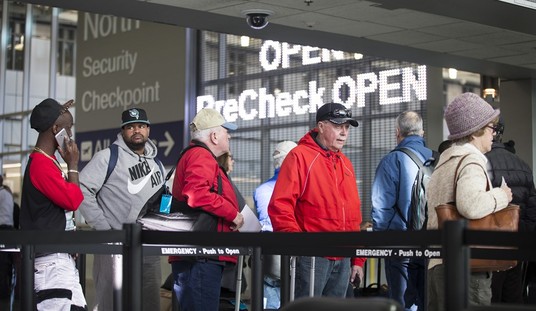
On March 4th, the United States Supreme Court will hear oral argument in a case called June Medical Services vs. Gee. This is a case out of Louisiana which enacted a law in 2014 requiring doctors who perform abortions to have hospital admitting rights within 30 miles of the location where the abortion took place. In 2016, in Whole Women’s Health vs. Hellerstedt, the Supreme Court struck down an almost identical law out of Texas in a 5-3 decision. The Court then with Kennedy siding with the liberal Justices determined the state had a legitimate interest in protecting the health of pregnant women. However, they also determined that the admitting privileges requirement did not advance that interest and only made it harder for a woman to get an abortion.
It would appear, given that 2016 decision, that this case would have been dead on arrival, but they accepted it regardless. What makes this case different from the one out of Texas? Besides asking for clarity on the vague rules of “undue burden” espoused in Casey vs. Planned Parenthood, Louisiana is also arguing that June Medical Services lacks standing to bring the case in the first place.
Soon after Roe vs. Wade was decided, the Supreme Court decided the case of Singleton vs. Wulff in 1976. That case asserted the ability of abortion providers to assert rights in the area of abortion. That case dealt with Medicaid funding for non-therapeutic abortions. Whether realizing it or not, the Supreme Court opened up the federal courts to third-party-rights abortion challenges. To wit, since then very few, if any, major abortion cases have been filed by women themselves. In fact, every major abortion case since Roe has involved an abortion provider. We do not see too many “Doe’s” or “Roe’s” these days.
This has been the core of abortion rights activists for decades. They are basically asserting a 14th Amendment right to hypothetical future patients. Whether abortionists share some unified interests with hypothetical future patients is a tough question to answer in light of some recent high profile abortion provider malfeasance. A good case in point is the Kermit Gosnell tragedy and the Ulrich Klopfler case out of Indiana. Upon the latter’s death, thousands of fetal remains were found in his home’s garage.
Some briefs have been filed in this case attacking the Fifth Circuit Court of Appeals decision which overturned the District Court which invalidated the law. District Courts are the finders of fact and defenders of abortion rights in this case argue that the Appeals Court basically discarded those “facts” and substituted their own. They warn of the dire consequences for jurisprudence if appeals courts do this. But, what if the “facts” are not facts at all? What if they are just hypothetical statistics on a spreadsheet? Exactly how many women in Louisiana seeking an abortion failed to obtain one because of this law? Of course, we can never confirm the alleged “facts” because the law was enjoined from enforcement.
Instead, the trial record at the District Court level found that some abortionists found it difficult to get admitting privileges. In one instance, the doctor could not find a nearby doctor to cover for him should he be unavailable or out of town. There were other instances of doctors who failed to gain these admitting privileges, but the Appeals Court found a lack of good faith effort on their part to pursue that avenue.
Further, this third-party attack on abortion regulations is quite paternalistic which should upset the sisterhood. In one brief filed with the Court, a study found that there are almost no cases filed by individual women challenging conscience rights, informed consent requirements, fetal disposition laws, or provider regulations. Instead, individual women have filed challenges against spousal or parental notification laws, or public funding restrictions. Given these lack of challenges by individual women in these areas, it is safe to assume that women support informed consent requirements, want fetal remains properly disposed, want clean and sanitary facilities, and have no problem with hospital admitting privileges for abortion providers.
It is the ghastly gristmill of abortion service providers who prefer the murderous free-for-all without oversight by the state. Although they may point out that Gosnell and Klopfer are the exceptions to the general course of their business, the mere fact they exist at all proves the need for regulation.
By cutting the ability of abortion providers to make the case for hypothetical future patients, real actual female patients could make their case as to whether any regulation is unconstitutional as applied to their particular circumstance. This would certainly provide some clarity with respect to the “undue burden’s” vaguely worded standards. At this point, the undue burden standard is akin to that quote about pornography: “I can’t define it, but I know it when I see it.” Unfortunately, unlike pornography, very real lives are at stake here, and not only those of the unborn.
In one study, from 1998 to 2010, there were 16.1 million abortions performed resulting in 108 deaths. That is a relatively low mortality rate of 0.7 deaths per 100,000 abortions. That is just deaths, however. Of the approximately one million abortions performed annually in the United States, there are complications in about 2% of the cases. That is 20,000 women in real terms. Most of these complications cannot be handled in the clinic and require hospitalization at most, or an emergency room visit at least. That is only the reported complications as some say the figure may actually be higher and handled at the clinic during post-procedure examination.
This case presents the Supreme Court to strike a blow to third-party standing in the area of abortion while simultaneously elevating the individual rights of all women. If the individual woman found that a law or regulation created an undue burden on her alleged rights, then that individual woman is free to challenge that law. Perhaps abortion providers can actually attempt to comply with necessary regulations that safeguard a woman’s health during and after an abortion rather than run to the courts and seek injunctions. There are a plethora of abortion-rights organizations with loads of money to represent these individual women.
Most importantly, the Court can direct the lower courts to avoid the hypotheticals and base their judgments on real life scenarios. Why did the Court take this case when it recently decided a similar case just four years ago? There is a growing consensus on the Court led by Justices Gorsuch and Thomas that the third-party standing principle in cases like this are due for an overhaul. On another level, this could actually be the first salvo fired in the war against national injunctions issued by lower courts.
This is an important case with effects beyond the sphere of abortion. One hopes that the Supreme Court has a spine and issues clearly defined principles going forward.














Join the conversation as a VIP Member